Submissions of 303rd Bomb Group related stories and articles are most welcome.



April 21, 2013
Volume V, Issue 4
www.303rdBG.com
Recollections of the unforgettable Mission #98 to Oschersleben
By Harold A. Susskind
This article was originally published in the Hell's Angels Newsletter, March 1991. Hal Susskind was the Hell's Angels Newsletter Editor at the time, a position he held for over 12 years. Hal passed away in December 2010. His contributions to the making of the history of the 303rd BG, and preserving it, will never be forgotten.
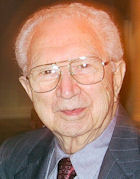 Forty-seven years ago [now 69 years ago], U.S. and British newspapers headlined stories about the vicious air battle over Germany on Jan. 11, in which the U.S. Army Air Forces lost 60 bombers while downing 125 German fighter aircraft. The long running dramatic air battle developed when the 8th Air Force sent a force of 633 B-17s and B-24s to attack fighter production plants in the Oschersleben, Brunswick and Halberstadt areas.
Forty-seven years ago [now 69 years ago], U.S. and British newspapers headlined stories about the vicious air battle over Germany on Jan. 11, in which the U.S. Army Air Forces lost 60 bombers while downing 125 German fighter aircraft. The long running dramatic air battle developed when the 8th Air Force sent a force of 633 B-17s and B-24s to attack fighter production plants in the Oschersleben, Brunswick and Halberstadt areas.
Commenting on the loss of 60 bombers, the Eighth Air Force officials said, "Possibly fearing that Berlin was the bombers destination, the Luftwaffe reacted in force and demonstrated that it had lost none of its ability to make a deep bomber penetration by daylight a costly enterprise.
Unfortunately, for the 8th Air Force bomber crews of that period, the possibility of many more vicious encounters with the Luftwaffe in the future was almost a certainty since the Allied Air Forces were committed to stepped up operations against Germany to prepare for a summer invasion.
As a result of the negotiations at the Cairo Conference in November 1943, President Franklin D. Roosevelt notified Gen. Dwight D. Eisenhower, then Commander-in-Chief of Allied Forces in the Mediterranean Theater, that he had been selected to become Supreme Commander for Project OVERLORD, the code name for the invasion of France planned for the summer of 1944.
At the same time, a reorganization of the U.S. Army Air Forces was under way. On Jan. 1, 1944, Gen. Carl A. Spaatz, became the coverall commander of the 8th and 15th U.S. Strategic Air Forces. Lt. Gen. James H. "Jimmy" Doolittle who served as air commander under Eisenhower during Operation Torch in North Africa, was selected by Eisenhower to lead the Eighth Air Force replacing Lt. Gen. Ira Eaker, who built and commanded the 8th Bomber Command from 12 aircraft in 1942 to the powerful air force of the day. Eaker was transferred to command all of American and British air forces in the Mediterranean area. The shuffle was part of the Allied planning for D-Day.
The overall planning called for the start of intensive air operations against Germany beginning on Jan. 1, 1944. Unfortunately the weather over the continent that day did not cooperate. However, for future operations, the 8th Air Force had equipped a limited number of B-17s with radar which would enable it to bomb targets in spite of the usual cloud cover over Germany during the winter. Some targets like the IG Farbenindustrie Chemical Works at Lugwigshafen, presented an unusually good radar return.
On Jan. 4, 1944, 569 bombers of the 8th attacked the sub-pens at Kiel. Seventeen bombers failed to return including one B-17 from the 303rd Bomb Group. On Jan. 7, 1944, 502 aircraft were dispatched to bomb the I.G. Farben plant at Ludwigshafen. There was a thick cloud cover, so bombing was by radar. Four B-17s and seven B-24s were lost.
Early in the evening of Jan. 10, 1944, Headquarters 8th AF decided to take advantage of a forecasted break in the clouds over Central Germany and scheduled a mission, Moments later, their teletypes were sending out the field order to heavy bomber combat wings all over England. Consequently at 04:00 hours on Jan. 11, a much harassed corporal in the 359th Sqdn., 303rd Bomb Gp., opened the door of our Nissen hut, switched on the lights and said, "Lt. Goolsby and Lt. Stoulil, you and your crews are scheduled for today's mission; breakfast at 04:30, briefing at 05:30."
Soon, eight pairs of feet were hitting the icy cold floor of the Nissen hut, with their owners reaching for all kinds of clothing in an effort to stop the chattering of teeth. After washing and dressing, the pilots, co-pilots, navigators and bombardiers for both crews headed for the mess hall to get fresh eggs made to order— a bonus you got on the days you were flying combat missions. Other days, you got powdered eggs.
With breakfast out of the way we headed for the briefing room anxious to see what target we had drawn for today. This was to be my fourth mission. The first one had been a "milk run" to a rocket installation in France; the second, an eight hour mission to Lugwigshafen where flak managed to knock out some of the plexiglass in the nose of our B-17, the third was to Kiel where flak once again shattered plexiglass in the nose. But each mission you got out of the way was a step closer to the 25 missions which was needed to complete a tour— at that time. Unfortunately the list of names then scrawled on the wall of the Site Seven O' Club of people who had finished 25 missions was not too numerous in spite of the fact that air operations against Germany had been going on for 13 months and the 303rd Bomb Group was now on its 98th scheduled mission.
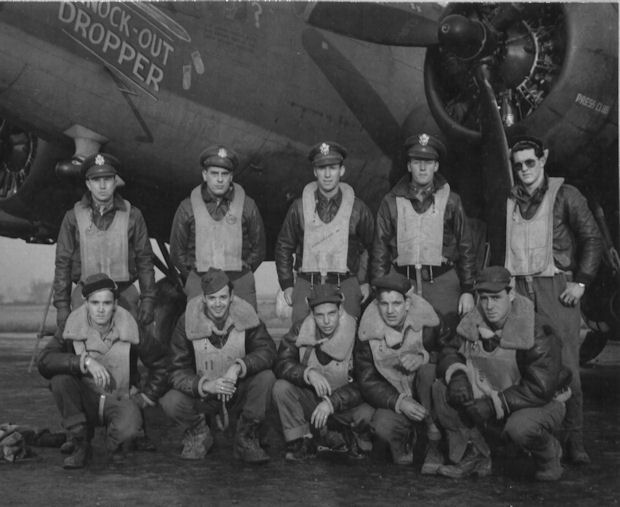
DONALD W. STOULIL CREW - 359th BS
B-17F Knockout Dropper #41-24605 (BN-R)
(crew assigned 359BS: 17 Nov 1943 - photo: 28 Nov 1943)
(Back L-R) 2Lt Harold A. Susskind (N), 2Lt George J. Trawicki (B),
2Lt Donald W. Stoulil (P), 2Lt Edward F. Callahan (CP), Sgt William F. Brown, Jr. (WG)
(Front L-R)
S/Sgt Kenneth L. Holder (BT),
S/Sgt George P. Greene, Jr, (WG),
T/Sgt James C. Owen (R),
T/Sgt Eugene A. Romer (E),
S/Sgt Calvin G. Turkington (TG)
The briefing room at Group Headquarters for the Hell's Angels Bomb Group was crowded as all the crews tried to find seats. A sheet covered the huge map that covered the front wall. Since the target was still hidden, I looked at the board which showed the names of the pilots, the aircraft number and the positions in the formations they would be flying in today. I looked for my pilot's, Lt. Stoulil, name on the board. There it was, "Tail end Charlie" in the high squadron of the lead group; sometimes a very vulnerable position. The aircraft number was #41-24561.
"Today is a maximum effort for the 8th Air Force. The 303rd Bomb Group, will be putting up 41 aircraft, divided into the lead and low groups," said Col. Kermit Stevens, the group commander. He continued with talk about flying a close formation, keeping radio silence and he offered some other suggestions for surviving the day's mission. Then the intelligence officer, Lt. Peter Michael Curry (now Judge Peter Michael Curry of the 166th District Court in San Antonio) removed the sheet from the map exposing a long line leading to the target. The mission was to be a fairly deep penetration into Germany, to bomb the A.G.0.). Flugzeugwerke, A.G., an FW-190 fighter assembly plant at Oschersleben. In November 1943, the plant had turned out 110 aircraft.
The 303rd Bomb Group with Gen. Robert Travis, Commander, 41st CBW, on board as air commander, was to lead a major force of three divisions comprising 633 B-17s and B-24s attacking three major targets, i.e., the FW-190 plant at Oschersleben, the JU-188 fighter production plant at Halberstadt and the Me-109 fighter production plant at Brunswick.
The part of the briefing that drew the most attention was Lt. Curry's remark about fighter opposition, "there are over 500 single-engine and twin-engine enemy fighters within 100 miles of your route." To balance that fact was the more pleasant numbers; the friendly fighter support we could expect along the route. Eleven groups of P-47s and two groups of P-38s could provide us with cover up to 70 miles of the target. One group of P-51s was capable of giving us air cover over the target area.
The general and special briefings over, we jumped onto a truck to take us on a cold ride out to where our aircraft was parked. I took a good look at the aircraft that would take us to our target and hopefully, back. Aircraft number 41-24561 was "The Duchess."
Today's mission to Oschersleben was The Duchess' 50th mission. She was one of the few planes in the ETO to run up that total at that time. According to the ground crew, cameramen were going to be on hand when we landed to take pictures of the event. We promised the ground crew we would bring her back and ourselves with her.
I boarded the nose of the aircraft and spread my maps out on the navigator table to study the route to the target. What I saw was not particularly encouraging. The route in, up to the point where we turned at the initial point (IP) of the bomb run, could be interpreted by the Luftwaffe as a raid on Berlin. If so, this could turn out to be a very rough mission.
I didn't have too long to wait to find out what kind of a prognostigator I was. We took off at 08:09 hours and departed from our base at Molesworth at 09:18 at 10,000 feet. Our formation led by Lt. Col. William Calhoun as pilot and Gen. Travis as air commander, departed the English coast at 10:01 at 14,000 feet. Everything was normal except that we moved up into the No. six position in the high squadron of the lead group due to another B-17 leaving the formation because of mechanical failure.
We crossed the enemy coast near Egmond at 20,000 feet at 10:35 and picked up our fighter escort of P-47s as the weather started closing in. It was hard going from then on. As we passed over the Zuider Zee, the Luftwaffe turned out in force and seemed to be sending every plane it could muster through our formation. "The Duchess" rocked and shuddered as her upper and lower turrets answered the bursts of the Luftwaffe. The intercom was filled with shouts of, "Fighters at 6 o'clock low, fighters at 12 o'clock high, fighters lobbing in rockets from 3 o'clock," as the various crew positions called in the directions from which the enemy aircraft were attacking. The Luftwaffe was determined to stop us from reaching Berlin. Minutes seemed like hours and hours dragged on like days. Finally, we reached the IP and started on the bomb run.
Ultimately, at 11:48 our Bombardier George Trawicki called out "bombs away" over the intercom, and The Duchess bucked as the bombardier hit the toggle switch that released our bombs on the FW-190 plant at Oschersleben. It was a direct hit. As soon as we left the target area, the Luftwaffe, which hadn't tried to come through the flak to attack us, took up where it had left off. They seemed angrier than before— if that was possible—and came at us like a swarm of bees.
At 12:18, our ball-turret gunner Kenneth Holder, the Texan on our crew called out, "FW190 coming in from 9 o'clock low." We heard the ball turret gun barking and then Holder yelling over the intercom, "I got him. The pilot bailed out and the aircraft just blew up." The rest of the way home was a battle against the weather. Because of the weather we had to cross the enemy coast lower than originally briefed and we were exposed to some moderate and accurate flak.
My pilot, Don Stoulil, who spent the day putting the B-17 through more maneuvers than imaginable, summed up the mission by saying, "If I live to be 200 years old, Jan. 11, 1944 will always bring to mind one event—the raid on Oschersleben."
He continued, 'When the bad weather moved in preventing the remainder of our fighter escort from taking off I knew we were on our own. Prayer time began about there. Somewhere in the area of the Zuider Zee it started. Bandits and more bandits all the way to the target —queuing up in the sun just out of range, then following the leader, they would swoop down and barrel through the formation head on, repeating this tactic time after time. Seeing a B-17 go down on nearly every pass, you began to wonder if your turn would come on the next one."
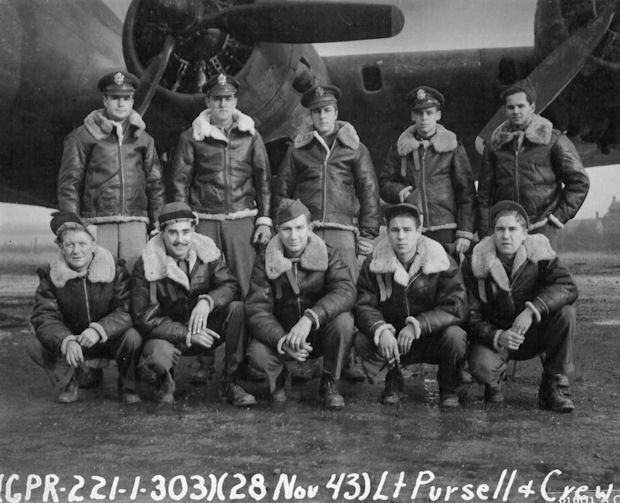
WILLIAM A. PURCELL CREW - 359th BS
(crew assigned 359BS: 14 Nov 1943 - photo: 28 Nov 1943)
(Back L-R) 2Lt William A. Purcell (P)(KIA), 2Lt Francis D. Krohn (CP)(KIA),
2Lt Marvin H. Mussett (N)(KIA), 2Lt Joseph B. Kyne (B)(KIA),
S/Sgt James C. "Sonny" Beeny (R)(KIA)
(Front L-R) S/Sgt Peter C. Castriciano (E)(KIA), Sgt Kermit W. Nye (LWG)(KIA),
Sgt John W. Swanson (TG)(KIA), Sgt Leonard N. Faner (BT)(KIA),
Sgt Harley R. Eastburn (RWG)(KIA)
"As cold as it was at altitude, I recall vividly the sweat dripping from my sunglasses. I also recall just as vividly the empty feeling in my stomach when I saw Purcell's ship get hit in the engine, then fire streaming back beyond the tail. As he pulled away from the formation, his ship simply disappeared in a huge ball of fire. I saw no chutes."
"On the next pass, an FW-190 got us square in his sights and headed straight for us. (You just know when he's got you singled out). As his guns started blazing away, I kicked left rudder, put my head down and waited for the shells to come spraying through the cockpit. I waited — nothing — he missed. Well not entirely. I noticed one or two jagged holes in the right wing just beyond the No. 4 engine. It seemed like it would never come, but we finally hit the
IP and turned on the bomb run. Not wanting to get their tails shot off by their own flak, the enemy fighters remained at a distance. However, after bombs away and making our way out of the flak area, they rejoined the battle and harassed us nearly all the way to the coast."
"As the surviving groups began to descend over the channel, we relaxed a bit, but not for long. Approaching the English coast, we could see the wall of weather that covered most of central English. Attempting to maintain some semblance of formation, we descended to a few hundred feet above the deck to stay under the ceiling, barely skimming the tops off several factory smokestacks."
"By the time we reached Molesworth, the field was completely closed in with fog so thick we could not see the runway. Had it not been for the fog-piercing phosporous flares which an alert ground crew had set out, we would probably still be looking for a place to set down. By now it was every man for himself as all semblance of formation had disintegrated. As I turned on my downwind leg, suddenly on our left another B-17 loomed out of the soup on a sure-fire collision course just yards away. Instinctively, I pulled back on the controls fully expecting his props to chew through our underbelly. We couldn't have missed by more than inches. I shuttered to think what would have happened had he made the same move. The near midair collision really scared the hell out of me. I tried pushing the rudder to turn and my leg doubled up like rubber."
"Somehow I managed to line up with the flares for a landing. Seconds later my co-pilot Ed Callahan, called out "B-17 just off our right wing." By now all I wanted was the feel of wheels on the runway and I remember remarking "to hell with it, I'm setting this kite on the ground." The landing was not the best one I ever made, but each bounce felt better than the last one. How all the planes milling around in that soup made it down safely, only the good Lord knows. After we pulled into the hardstand, we learned that a message had gone out to the group to land at bases in southern England. Somehow, our group radio operator never received the message. When the word went out that we were not to land at Molesworth, the photographers and reporters departed and "The Duchess" never received the publicity she so richly deserved."
"Inspecting the ship for battle damage, we counted 38 holes from flak, bullets or shells. Fortunately, none of the crew was hurt and none of the controls or vital systems was hit, but the floor of the waist section was covered with several inches of empty 50 caliber shells—mute evidence of one helluva fight."
"Referring to the jagged holes that appeared in the right wing, that evening our ground crew chief came over to my but to say, "Lieutenant, I just wanted to tell you what a lucky guy you are. We just pulled an unexploded 20mm shell out of the gas tank."
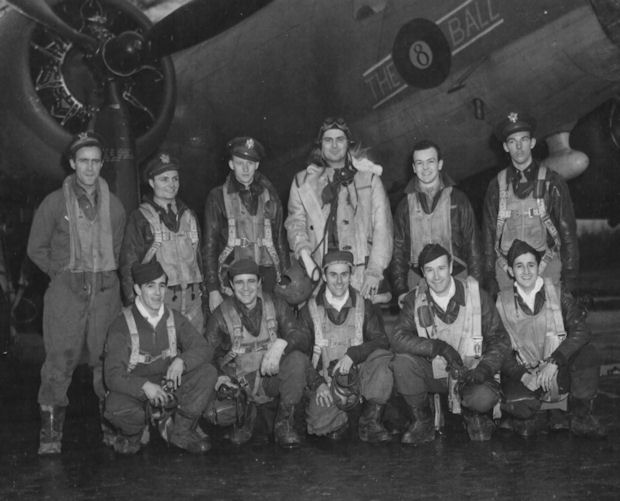
The '8' Ball Mk II #41-24635 (359BS) BN-O
1st BD Lead (359BS) - Pilot LtCol W.R. Calhoun, Jr. / CoPilot B/Gen R.F. Travis
(Back L-R) 2Lt Robert H. Halpin (TG-O), Capt Jack B. Fawcett (B),
Capt Norman N. Jacobsen (N), B/Gen Robert F. Travis (CP),
LtCol William R. Calhoun (P), 1Lt Darrell D. Gust (N)
(Front L-R) S/Sgt Harley F. Jennings (WG),
T/Sgt George R. Keesling (E), S/Sgt Leroy L. "Shorty" Mace (BT),
T/Sgt Kenneth P. Fitzsimmons (R), S/Sgt Albert C. Santella (WG)
Jan. 11, 1944 was an especially important day for Capt. Darrell D. Gust. It marked his first wedding anniversary and his last mission of his combat tour. His recollections of the mission, are outlined below.
Capt. Norman Jacobson, the group navigator and a classmate in Navigation School in 1942, called Gust the night before and invited him to come down to Headquarters to help with the field order coming in for the mission on Jan. 11. At that time Gust, was the squadron navigator for the 359th. The field order stated that the 303rd Bomb Group would be leading the 41st CBW, the 1st Air Division and the entire 8th Air Force. Since the 359th would be the lead squadron in the Group, that meant that Gust and Jacobson would be flying in the lead aircraft along with Brig. Gen. Robert Travis, air commander of the 1st Division, and Lt. Col. William Calhoun, 359th Squadron Commander. Because it was late when they finished the flight plan, Gust hit the sack.
"I don't know how long I slept before the corporal awakened me for the 04:30 breakfast and 05:30 briefing. The emphasis at the briefing was that it was a maximum effort for the 8th Air Force, the importance of knocking out the FW-190 plant, which turned out 110 fighters in November 1943 and the number of German fighters that could be expected along the route."
"Station time was 07:00 and as I arrived at the aircraft, my nervous stomach started doing flip-flops because of the importance of the mission and the fact that it had been months since my last combat mission. I went behind "The Eight Ball" and tossed my cookies."
"The mission went as briefed until we hit the Zuider Zee and then in spite of our fighter escort, the enemy fighters came at us in bunches. Our first attacks were four FW-190s, the next was 30 FW-190s, the next was 12, and they just kept coming. They came at us from all sides and it was quite apparent that they were out to stop the formation from ever reaching the target."
One of the enemy tried to ram the lead ship, causing Lt. Col. Calhoun, to say at the debriefing: "The fighters were desperate today. A group of 30 FW-190s came at us head-on and I had to lift a wing once to keep one from ramming us.
"We were near Dummer Lake in Germany when General Travis notified us that, "The weather is closing down over England. The 2nd and 3rd Divisions are being recalled, but because we are this far into Germany and weather is constantly improving, I'm electing to continue on and bomb the primary target."
Soon after this, our fighter escort did 180s and headed for home. No sooner had they left us when we were hit hard by about 50 to 60 FW-190s making frontal passes at us. They seemed intent on downing the lead aircraft and I spent quite a bit of my time manning the two cheek guns in the nose."
"The Eight-Ball continued to weather the attacks but other group bombers began falling to German fighters. On their first pass they got the `Mickey' (Radar) aircraft on our left wing. On their second pass they got our second element leader and one of his wingmen."
"We hit the IP at 11:39 and I could see the primary target plainly. At 11:48 bombs were away and our tail-gunner observer reported an excellent clustering of bombs right on the target. The Hell's Angels Group had succeeded in its' mission. Our bomber formation started for home and the German fighters once again attacked with the same fury shown on the inbound flight. More B-17s went down."
"At 12:09, P-51s of which we had been briefed as being our over the target escort, began appearing. One of them got an enemy fighter. At 12:30, a twin engine Me-110 started to make a frontal attack on us. Out of nowhere with guns blazing came a P-51 and the 110 blew up right in front of us. A fraction of a second later we flew through the black puff of what was once an enemy aircraft."
"I saw three more B-17s of the 303rd go down as we continued our flight towards England. We crossed the English coast at Great Yarmouth and the weather deteriorated rapidly. We landed at Molesworth at 15:05 aided by the magnesium flares to help us find the runway. Because of the weather and being low on fuel, eight of our bombers landed at other airfields and 10 of our aircraft — 7 from the low group and 3 from the lead group—were missing."
For their bravery and courage under fire, the attacking groups of the 8th Air Force's First Air Division were awarded the Presidential Unit citation. A prime example of this bravery and the will to survive, was exemplified by the heroic actions of the men of 2nd Lt. John F. Henderson's crew, 427th Sqdn., 303rd Bomb Group. On this particular mission they were flying second element lead in the high squadron of the low group which was led by Major Glynn Shumake and Capt. John Casello.
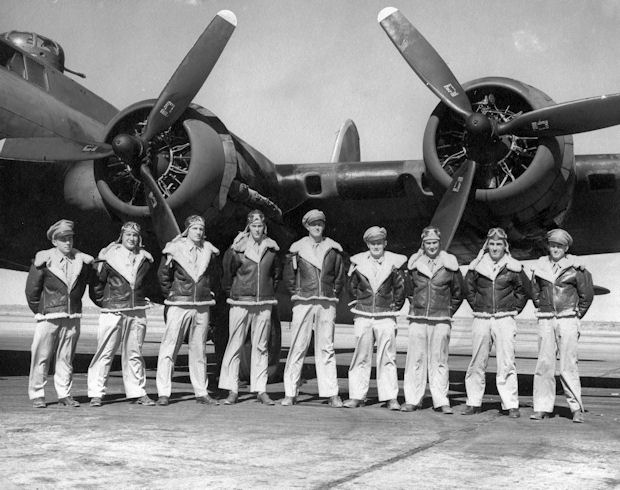
JOHN F. HENDERSON CREW - 358th BS
(L-R) 2Lt Warren S. Wiggins (N), Sgt Edward Ruppel (BT), S/Sgt William H. Simpkins, Jr. (E),
T/Sgt Forrest L. Vosler (R), 2Lt John F. Henderson (P), 2Lt Walter J. Ames (CP),
Sgt Ralph F. Burkart (WG), Sgt Gratz (TG) 2Lt Woodrow W. Monkres (B)
Henderson's own private war started at 11:00 hours when R.A. Jeffrey on his first mission, flying as the right waist gunner, shot down an FW-190 near Minden, Germany, as it was turning to make another pass from the 3 o'clock position. It might have been this particular fighter that caused "Yankee Doodle Dandy" to fall behind the formation by raking it with machine gun fire as it crossed over the top on its first pass, knocking out some of the plane's controls. Seconds later, a Me-110, out of range of the B-17's guns, fired a rocket from its 9 o'clock position knocking a hole in the vertical stabilizer, the size of the triangle which framed the C. This added to the problems Lt. Henderson was already having trying to control the aircraft and keep it in the air.
Soon, "Yankee Doodle Dandy" was all alone trailing the rest of the formation while a bunch of German fighters surrounded it, making passes at will.
The next kill was recorded at 11:13 hours by the navigator, Lt. Warren S. Wiggins, who shot down an FW-190 as it was making a pass from 11 o'clock. Suddenly, the tail gunner's guns stopped chattering. Sgt. Ralph F. Burkart died at his position fighting off the multiple tail attacks by the Luftwaffe. Unfortunately for Burkart, one got through.
At 11:18, S/Sgt. William H. Simpkins, left waist gunner recorded the first of his kills when he shot down an FW-190 coming in from the 8 o'clock position, south of Hanover. With the tail guns out, the enemy aircraft concentrated on the tail attacks. When this happened, the engineer and top-turret gunner, S/Sgt. Stanley R. Moody, turned his guns toward the tail and picked off an FW-190 at 11:20 hours, attacking from the 6 o'clock position. It exploded at about 150 yards behind their aircraft.
Three minutes later, Sgt. E. Ruppel, the ball-turret gunner got two FW-190s making belly attacks. With the tail guns still silent, the attacks continued from that direction. At 11:24, Moody spotted another FW-190 coming in for a tail attack using the same procedures the previous FW-190 had used. The FW came within 400 yards of the "Dandy" when it exploded from a long burst fired by Moody.
Firing through the radio hatch, Sgt. R. E. King downed an FW-190 which came in from seven o'clock, quite high. Seconds later King became a casualty when he got hit in the side by shell fragments that shattered his thigh between the knee and hip.
Now the Germany fighters changed tactics and once again started making attacks at the nose of the aircraft. Suddenly, Ed Ruppel looked to his right and saw a German fighter aircraft making a pass from underneath a wing. "He seemed to be firing everything he had at me," said Ruppel at the debriefing. "I got him in my sights, pumped a few big bursts and he disappeared. He blew all to pieces. But I think this is the one that got Jeffrey."
Still furiously firing their waist guns, Simpkins was standing only inches away from Jeffrey when a 20mm shell came up between them and although Jeffrey was wearing a flak suit, the fragments came up between his legs and mortally wounded him. Simpkins got hit in the back with several pieces of the shell but fortunately he was standing on his flak suit, instead of wearing it. The shell fragments got imbedded in the flak suit on the floor and in the fleece lined flying suit he was wearing.
"Yankee Doodle Dandy's" own private war continued. At the time that Ruppel blew up the aircraft that seriously wounded Jeffrey, Moody scored another kill from his top-turret gun position. He had his guns firing towards the tail when he saw a twin-engined Me-110 coming in. He told the pilot to take evasive action. The pilot dropped the B-17 quickly bringing the 110 into Moody's sights. Moody fired a long burst and the Me-110 started smoking from one engine. The pilot bailed out and the plane went down.
Between 11:20 and 11:30 hours, (You lose track of time at times like this), the bombardier, Lt. Woodrow Monkres, claimed a kill when an FW-190 with belly tanks, made a level head-on attack. Monkres got him with his single nose gun. The pilot of the enemy aircraft bailed out just before the plane blew up
At 11:34, Ruppel warded off another belly attack from a Me-110 coming in low from 6 o'clock. He pulled up sharply and raked the belly of the "Dandy" when Ruppel, firing his ball-turret guns, knocked out an engine. The enemy aircraft went down trailing smoke from one of his engines.
In spite of all the action, the "Yankee Doodle" was still five minutes from the IP. Despite the many sustained attacks by the Luftwaffe, Lt. Henderson's "Yankee Doodle Dandy" was one of the Hell's Angels aircraft that bombed the primary target that day.
On the homeward bound flight, Sgt. Simpkins recorded another kill when he knocked down an FW-190 Northwest of Oschersleben. At the debriefing, the tally sheet for the "Dandy's" personal war against us the Luftwaffe showed Dandy with 12 enemy aircraft destroyed plus one damaged.
"Yankee Doodle Dandy" was one of the group's eight aircraft that had to land at another base. Lt. Henderson selected Watton, a former RAF base serving as an air depot for overhaul and repairs of B-24s. Firing off "red flares" to signify wounded aboard, Lt. Henderson made a smooth landing in spite of damaged tires. Jeffrey, Burkart, Simpkins and King were put into ambulances and rushed to the local base hospital for immediate medical attention. Burkart was dead. Jeffrey died on the operating table. King and Simpkins were operated on that night. Both survived to fly more missions. Simpkins was eligible for his second Purple Heart.
Eighth Air Force officials in further discussion of the Luftwaffe's tactics on the Oschersleben raid said, "The Luftwaffe's fighters gave the 8th the stiffest battle it had since the October day in 1943 when the Germans so seriously mauled a similar force attacking Regensburg and Schweinfurt. Indeed, it appeared that they had in some respects improved their tactics.
Never before had they been able to stay with the bomber formations for such extended periods. By using belly tanks, the Germans were able to stay out of escort range, following the bomber formation until the escort was forced to return to base or until a few escorting planes were left. Then dropping their tanks, the enemy planes pressed home large and coordinated attacks on the relatively unprotected AAF formations. In instances where the bomber formation was as tight as required for mass protection against single-engine enemy fighters, the German twin-engine fighters made use of the opportunity to lob rockets into the formation from a point beyond normal gun range, often with deadly effect. If on the other hand the formation became spread out enough to make a rocket attack relatively harmless, its elements fell prey to mass attack by single engine fighters."
Were the results of the mission worth the price paid?
At a group critique of the Oschersleben mission held about two weeks later, there was a heated discussion about Gen. Travis' decision to go on the bomb the target in spite of the orders recalling the bombers and supporting fighters sent out by higher headquarters. Of the major force of 633 bombers sent out, 408 turned back when the order was received. In his defense Gen. Travis emphatically stated that he received no recall orders. Sixty bombers were lost from the 225 that continued on to bomb the primary targets with the 303rd Bomb Group losing 10 aircraft and 11 crews (110 men) for a loss rate of more than 25 percent; a very high price to pay in both men and machines.
On the other hand the primary targets, like Oschersleben which was turning out 45 percent of the German fighter planes, were generally destroyed which hampered German fighter production for many months. This, added to the 300 German aircraft destroyed or damaged on the mission, was in keeping with the objectives of the January 1, 1944 plans, "to mount and conduct intensive air operations against Germany and its war making facilities," so that a summer invasion of France could be more than just a possibility.
Eventually the summer invasion of France became a reality so it was with a great deal of satisfaction that on June 6, 1944, the 303rd, including Stoulil's crew, flew two mission in support of the ground troops in their assault on the Normandy Beaches. On our second mission of the day, which was my 30th, we led the First Air Division with Gen. Robert Travis aboard as Air Commander. Possibly the sacrifices made by the 303rd at Oschersleben on Jan. 11, 1944 were not in vain.
![]()
They became comrades on a mission that only young men with determination and the feeling of immortality would have attempted or returned from
By Ray Westbrook
Published in the Lubbock Avalanche-Journal, August 27, 2012
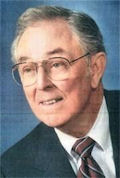
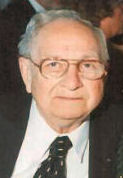 |
Rufus Grisham, who died July 15, 2012 in Lubbock, and William Cox, now a retired Air Force colonel living in California, first met as lieutenants at an airbase near Rapid City, S.D., midway through World War II. They became comrades on a mission that only young men with determination and the feeling of immortality would have attempted or returned from.
Grisham was 24 then, and the pilot of Princess Pat II. Cox, 21, was copilot.
With a crew of seven other airmen, they flew a B-17 from Rapid City to Northern Ireland, then were sent to an airbase at Molesworth in England.
Jean Cox, now wife of the copilot, said “Grish” and Bill were close friends.
“Their bunks were side by side in the Quonset for the entire time they were in England. They went on passes together to London, until they agreed to not take any more leaves and get their 35 required missions over with,” she said.
Grisham and Cox saw London burning, bombed into chaos by Adolph Hitler’s Nazi killing machine. That may have awakened in them a zeal to enter the fray more quickly. But there was a practical side to it, also:
“They decided they were just as safe flying as they were in London,” Jean said.
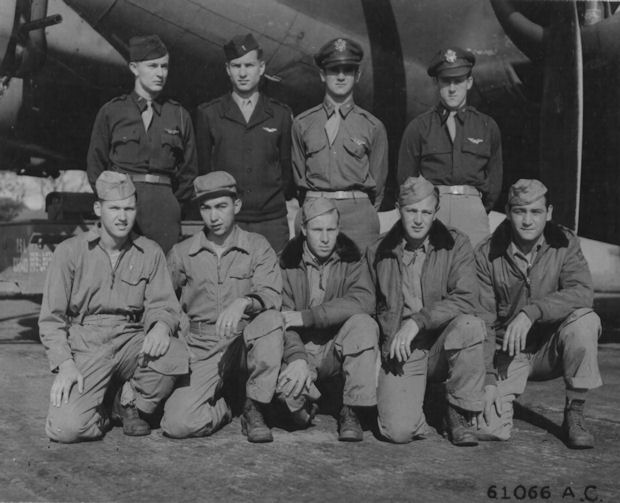
RUFUS W. GRISHAM, JR. CREW - 358th BS
(crew assigned 358BS: 17 Aug 1944 - photo: 25 Aug 1944)
(Back L-R) 1Lt Rufus W. Grisham, Jr. (P), 1Lt William H. Cox (CP),
1Lt Nicholas J. Celich (B), 1Lt Gale E. Hartel (N)
(Front L-R) S/Sgt Arnold A. Willis (TG), T/Sgt Harry R. Post (R),
S/Sgt Gerhard W. Loessin, Jr. (BT), S/Sgt Ben M. Buie (WG),
T/Sgt Edwin P. Scheuermann (E)
Grisham and Cox, with their crew, had completed 28 missions when they set out for a mission on Dec. 27, 1944. It was directed to bomb targets in a supply area used to support Germany’s offensive during the Battle of the Bulge.
The flight may have seemed impossible even before the plane left the ground. Princess Pat II, roaring down the runway at dawn on a freezing English winter morning that included large patches of ground fog, required an instrument takeoff, according to Cox’s narrative of the mission.
Grisham, recalling the morning in 1944 for an article in the Avalanche-Journal in 2002, said, “At takeoff from England, visibility was almost zero.”
Once aloft, weather conditions caused the windows of the cockpit to frost over, making the usually routine assembling of the bomber group extremely difficult.
Grisham was able to assume his position as lead aircraft of the high flight formation before a mechanical problem appeared.
“Just prior to leveling off at 24,000 feet, the Number 4 engine began leaking oil, and 15 minutes after crossing the Belgium coast, the engine had to be shut down and the prop feathered due to the loss of engine oil,” Cox said in his account.
They would have been blameless if they had turned back to England at that point, but Grisham saw no need to do that: “The B-17 will fly on two engines,” he said at a veterans appreciation luncheon held by the Lubbock Lions Club in 2010.
Cox’s narrative of the mission noted, “Increasing the power on the other three engines, Lt. Grisham continued on the mission.”
In the target area, flak became deadly accurate. Grisham, remembering the bombing run, said at the Lions Club luncheon, “We had this heavy burst of flak right off the nose of the plane, and immediately the rpm started dropping on the two inboard engines.”
The aircraft was left with one engine on full power, two with 50 percent power, and one with no power.
The bomb run itself was made visually because the ground fog was dissipating.
Cox recalled in his narrative, “As the aircraft passed near Malmedy, the flak bursts continued to come so close, the pieces of metal constantly hitting the aircraft sounded like someone throwing large rocks on a metal roof.”
Grisham recounted for the Lubbock Lions how a large flak strike went through the fuselage, and wind rushed through the plane. “I heard the roar and thought the plane was on fire.”
A cloud of insulation filled the cockpit, making it impossible for the pilot and copilot to see for a matter of minutes. Grisham called to the engineer who was operating the top turret gun: “I kept calling Ed, saying, ‘Ed, tell me if the plane is on fire.’”
The implication meant that if the plane was burning, it likely would explode.
Flak bursts took out oxygen supplies for some of the crew, and the plane was forced down to 2,500 feet, with an air speed of 150 mph and four hours remaining to reach their base in England.
“We were trying to get home,” Grisham had said.
Cox recalled in his narrative of the mission, “When the aircraft reached the coast of Belgium on the withdrawal, the air crew had been left behind the low group’s formation and was on its own to make it home.”
Grisham decided to try to reach their home base rather than attempt a landing short of Molesworth, and when he approached the base, other planes in the mission also were coming in to land in low-visibility weather.
Cox recounted, “The situation of this aircraft was it only had the total power of less than two engines, even with the No. 1 and No. 2 throttles wide open. The airspeed was just holding above stall conditions.”
Because of the crowded approach where other planes were landing, Grisham was instructed to go around — a plane that had priority was slow in clearing the runway.
“Grisham calmly and carefully nursed the aircraft back into a 360-degree turn and was perfectly aligned for touchdown at the completion of the turn,” Cox said in the account.
Neither the air traffic controllers nor the crew were aware that the left tire of the plane had been shot through, leaving a large hole in it. When the plane touched down, it began a swift turn to the left. Grisham was able to make a controlled ground loop out on the grass, clearing the runway for the next plane. It came to rest with one wing just inches above the ground.
By careful count, there were 128 holes in the plane ranging from the size of a dime to that of a basketball. Somehow, no crew member had been actually wounded during the mission, though an oxygen mask had been ripped off one of the men by a piece of shrapnel.
After the war, Grisham entered the business sector in a job with Anderson Clayton and Co., eventually retiring as president of the Texas Oilseed Processing Division after a 44-year career. He was the charter president of the Southwest Lubbock Rotary Club, chairman of the board of Methodist Hospital, and chairman of the board of the Lubbock Chamber of Commerce.
Cox, in a phone interview, said of his World War II service, “I thought I would stay in for a while. Everybody else was trying to get out, and I thought I would let the dust settle.
“I stayed in for 30 years.”
Cox, who had received basic training at Sheppard Field, Wichita Falls, attended four weeks of education training at Texas Tech, and was given 10 hours of introduction to flying in a small aircraft at Lubbock. He flew in three wars, and received the Distinguished Flying Cross for his work in the Korean War.
Remembering his friendship with Grisham, Cox said, “Grish was meticulous about any task assigned, and calm under fire. He was a man of faith, and never missed worship services on Sunday if we weren’t flying.”
Grisham’s flying prowess was largely forgotten by the War Department in the fast-paced development following World War II. But in February 2002, U.S. Rep. Larry Combest presented him the Distinguished Flying Cross.
It was for Mission 29, flown Dec. 27, 1944.
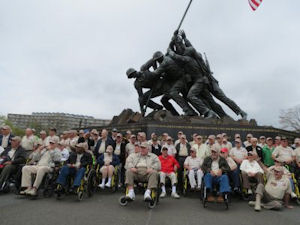
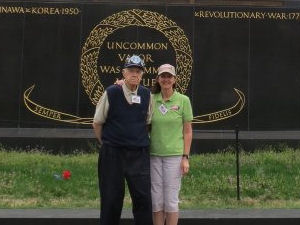
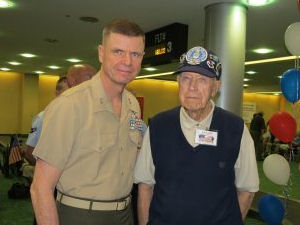
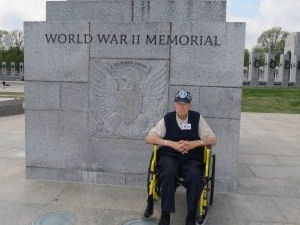
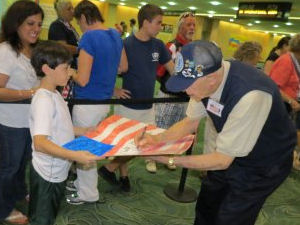
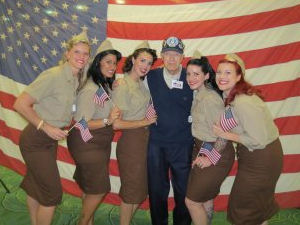
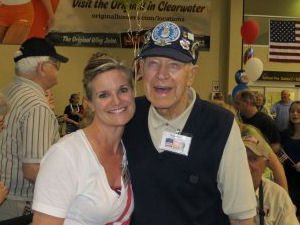
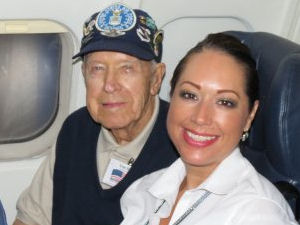
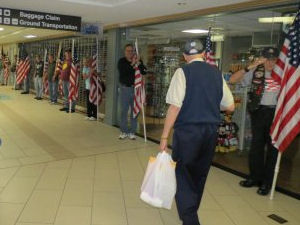
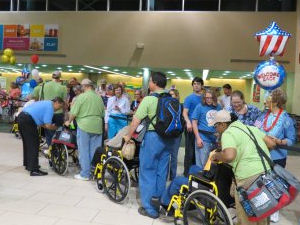
by Jason Seay
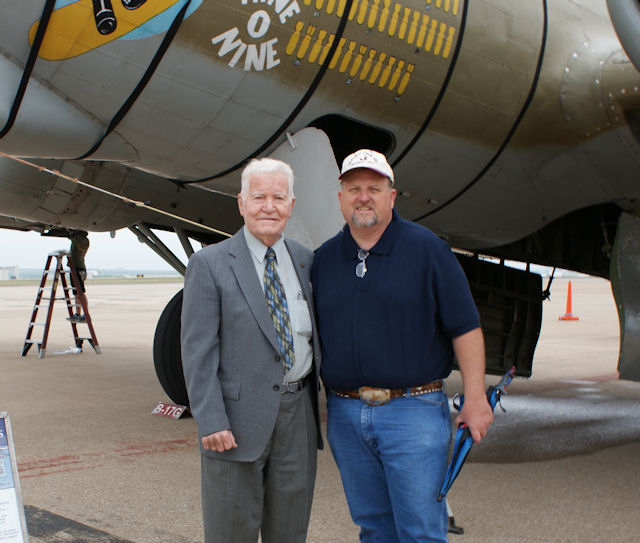
T/Sgt Samuel A. Rowlett, 359th BS Radio Operator, with Jason Seay, visits a B-17 for the
first time since bailing out over Merseburg on 24 August 1944.
On April 2nd I decided to surprise my Pastor, former T/Sgt Samuel Rowlett who served as a radioman in the 359th squadron of the 303rd Bomb Group (heavy), with a trip to visit the Collings Foundation's B17. "Nine O Nine" was on display at Meacham Airport in Ft.Worth. I brought along Rev. Rowlett's son Danny, and my 8 year old son Sammie Joe, who is named for Rev. Rowlett. I thought this would be a great history lesson for my son .
Little did I know it was me that was in for a "History Lesson" that I would never forget!
When we arrived, Rev. Rowlett headed straight for the ladder at the front of the plane and was inside before I even realized he was gone! (He's 89 !). As soon as he was inside, he crawled in the top turret position and was standing at the twin 50cal. Rowlett looked down at me and said, "This is where I was on my first mission, there was a German plane coming at us, and I locked down on the triggers. I got him, but I burned up both barrels!, They didn't tell me to fire in short bursts, boy I thought I was going to be in big trouble when we got back for burning up those barrels!." I said, "Wait a minute. You just said that it was your first mission and you didn't know to fire in short bursts?!" Rowlett said, "some things you learned as you did it." I said, "You have German pilots shooting at you, Lord knows how high in the air you were, and you are worried about getting in trouble for burning up a machine gun?" Rowlett said, "oh they didn't like it when you tore stuff up."
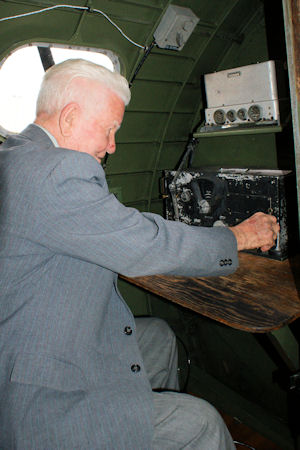 Rev. Rowlett took off past the bomb bay towards the radioman's station. As this was my first time on a B17, I had no idea what to do or where to go! This 89 year old veteran looks through the bomb bay at me and said, "well come on." The bomb bay was open and I cautiously squeezed my way through to the radioman's area. Rev. Rowlett was in the seat busy turning knobs on the radio. I told him that the bomb bay was kind of scary he said, "you should have been back here on a mission!" He said that sometimes Eldridge (pilot) would call back and say, "Red (Rowlett's nickname) we got one hung up go kick it loose would ya. So I would go into the bay and kick 'er loose."
Rev. Rowlett took off past the bomb bay towards the radioman's station. As this was my first time on a B17, I had no idea what to do or where to go! This 89 year old veteran looks through the bomb bay at me and said, "well come on." The bomb bay was open and I cautiously squeezed my way through to the radioman's area. Rev. Rowlett was in the seat busy turning knobs on the radio. I told him that the bomb bay was kind of scary he said, "you should have been back here on a mission!" He said that sometimes Eldridge (pilot) would call back and say, "Red (Rowlett's nickname) we got one hung up go kick it loose would ya. So I would go into the bay and kick 'er loose."
I hear my eight year old son, who is standing beside me say "COOL." I thought he's telling me this like it was nothing! I'm looking at the bomb bay with these inert bombs hanging there but they are marked TNT and I'm thinking..... "oh sure no big deal." I would have wet my pants!
Then he looks out the window and says "this is where I was sitting on that day (24, August 1944) over Merseburg when I looked out the window and saw that the left wing was on fire. I called up to Eldridge and said hey we've got a wing on fire. Eldridge said that's a tank fire! prepare to bail!."
I said, "Where did you go to bail out?" Rev. Rowlett said, "Well first I had to find my chute" I thought find your chute! On that day you are participating in the largest bombing mission of WWII, against one of the toughest targets in Germany and you didn't have a parachute on! I would have had two of those things strapped on! So I asked, "Where was your chute?" Rowlett answered, "Oh it was laying back here on the floor, it was just a belly chute, that's all I brought with me that day."
At this point I realized why he broke his leg when he hit the ground after he bailed, and I had to ask, "Pastor were you crazy?" Rowlett replied, "No I was 19!"
Rowlett said, "I headed for the waist door", then took off toward the back of the plane, slipping past the ball turret like it wasn't even there! I'm trying to find something to hang onto as I carefully check my footing moving past the ball turret, and hear my son say, "Hurry up Dad, he's gonna show us how he bailed out!" I say silently "Oh Lord help me make it through this!"
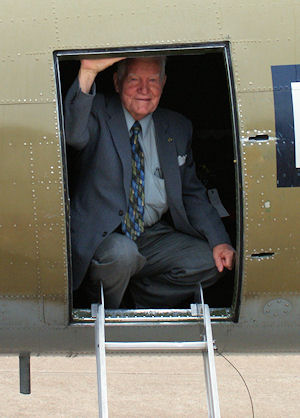 At the waist door Rowlett said "When I got here one of the waist gunners was trying to get the door open, but it wouldn't budge. I told him to get out of my way so I could get out, he said No, I'm getting out first, I told him well you better hurry up cause I want out of here! I told him to put all of his weight against the door and I would push on him and that's what finally got it open. I went out of the plane head first, opened my belly chute and as soon as I was clear the plane exploded!. But we all got out!"
At the waist door Rowlett said "When I got here one of the waist gunners was trying to get the door open, but it wouldn't budge. I told him to get out of my way so I could get out, he said No, I'm getting out first, I told him well you better hurry up cause I want out of here! I told him to put all of his weight against the door and I would push on him and that's what finally got it open. I went out of the plane head first, opened my belly chute and as soon as I was clear the plane exploded!. But we all got out!"
Rowlett exited the plane down the ladder facing forward as he did the day he bailed out.
I slowly clambered out of the plane, and once on the ground Rowlett said, "boy, that was the loneliest feeling I ever had watching those planes fade away flying home, and I was hanging there headed for the Germans. . . .Man, that was a lifetime ago."
I realized I had just been given a History Lesson that I would never forget. Over the years I had heard my father and other WWII Air Corps veterans tell stories. But being in that B17 reliving an event with someone who went through what Rev. Rowllet had, gave me a totally new perspective.
Standing on the tarmac I listened as other people viewed the plane, they would say "I thought these planes were bigger on the inside.", "This metal is not that thick.", " This is all they had for instruments and radios?", "There's no insulation in this thing, they must have been freezing.", " I don't see how they did it".
I looked at my son intently listening to a few old veterans reminiscing around a B17, I thought the same thing. I don't know how they did it. . . . but Thank God they did.
![]()
SAVANNAH, GA - July 22 - 26, 2013
See the details here
|
— Historic Issues Revisited — This Month: Jaunary 1982 |
Edward F. Goggin, 88, of New Hartford, died April 14, 2013, at St. Joseph Nursing Home. He was born on November 6, 1924, in Utica, son of the late Cornelius and Ellen Walsh Goggin.
He attended Our Lady of Lourdes Grammar School, New Hartford High School, Rider College and took courses at Utica College and MVCC. Ed was a veteran of World War II, serving in the US Army Air Force. He flew from England over Germany as an aerial gunner on a B-17 heavy bomber.
He married Joyce Eileen Wood on August 25, 1951, at St. John the Evangelist Church, New Hartford, a marriage of 53 years until her death on May 2, 2005.
Ed operated the Edward F. Goggin Insurance and Real Estate Agency in New Hartford for many years and was currently associated with Gates-Cole Insurance. He served the Town of New Hartford as an Assessor, Town Councilman and a member of the Assessment Board of Review. He also served as an Oneida County Legislator and served as Majority Leader. Ed was a Charter Member and Past President of the Kiwanis Club of New Hartford; Utica Council #189 K of C and its 4th Degree; New Hartford American Legion Post, where he served as Past Commander; Utica Elks Lodge #33 BPOE; Honorary Member of the New Hartford Fire Department, where he served as Treasurer for many years; the VFW Post 9591 of Clinton; The Skenandoa Club of Clinton; the Eighth Air Force Historical Society; 303rd Bomb Group Association; and the Utica Curling Club.
He is survived by his son, Terrance M. Goggin, of Florida; his daughter, Mary E. Goggin, of New Hartford; his grandchildren, Brianne Goggin and Katie Goggin, of Florida; his daughter-in-law, Lydia Goggin, of Florida; and several nieces and nephews. He was predeceased by his brother, Cornelius Goggin; brother-in-law and sister-in-law, Jack and Treva C. Wood; and sister-in-law, Ann Goggin.
The funeral will be Saturday at 8:30 AM at the Dimbleby, Friedel, Williams & Edmunds Funeral Home, 13 Oxford Rd., New Hartford, and at 9:30 AM at St. John the Evangelist Church, where a Mass of Christian Burial will be celebrated. Interment will be in Mount Olivet Cemetery. Calling hours are on Friday from 4-7 PM. The New Hartford American Legion will conduct services at 6:30 PM. In lieu of flowers, donations may be made to the New Hartford Fire Department. Online messages of sympathy, go to: www.dfwefh.com
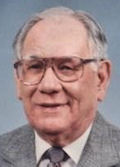 William G. "Bill" Hendon was reunited with his beloved Lucy on Friday, April 12, 2013. Funeral services will be at 12:30 p.m. Monday at Collier-Butler Funeral Chapel. The Rev. Frank Samuels will officiate with burial in Forrest Cemetery with military honors.
William G. "Bill" Hendon was reunited with his beloved Lucy on Friday, April 12, 2013. Funeral services will be at 12:30 p.m. Monday at Collier-Butler Funeral Chapel. The Rev. Frank Samuels will officiate with burial in Forrest Cemetery with military honors.
Bill was born Oct. 25, 1925, one of 11 children, to Luther and Pauline Hendon. He attended Gadsden High School until he left to serve his country in the Army Air Corps. He was a ball turret gunner on a B-17 in the 303rd Bomb Group and was stationed with 357th Squadron in Molesworth, England. He flew 32 missions over Germany in Hell's Angels, earning three Gold Stars. They were briefed after one of their missions and told they had just witnessed the first German Jet Fighter.
Upon his return from the war, he married Mary Lucille Machen in 1948 and they remained sweethearts for 65 years until her death on March 11, 2013. In 1956, he partnered to establish Service Auto Parts, where he later became sole proprietor, at which time he incorporated and continued as a successful business owner until his retirement in 1994. Through his association with the industry, he and Lucy were able to travel all over the world. His later years were spent as the devoted caregiver to his beloved wife.
Bill was a member of the American Legion, VFW and faithful member of College Heights Baptist Church, serving as Usher, Deacon, Sunday School Director and Pastor Search Committees. Bill was preceded in death by his wife, Mary Lucille; infant sons, William Michael, 1954, and Mark Leslie, 1958, and William Barry; parents, Luther and Pauline Hendon; mother-in-law, Mae Belle Machen; sisters, Eloise (H.L.) Piltcher, Catherine Wood, Elaine Hendon, Regina (Bill) Blackwell; brothers, Charles Roy and Bobby Ray; brother-in-law, Delwyn Borgersrode; sister-in-law, Fannie (Robert) Adcock.
Left to cherish his legacy are daughter-in-law, Robin (Terry) Ford; granddaughter, Heather (Andrew) Carlisle; grandsons, Andrew (Alanna) Hendon, Zachary (Laura) Hendon, William Tyler Hendon; great-grandsons, Gideon Parker and Silas Henry Hendon; sisters, Betty Borgersrode, Gail Scarber and Linda Owens; brother, Eddie (Louise) Hendon; and numerous nieces and nephews.
Pallbearers will be grandsons, Andrew, Zachary and Tyler Hendon, Andrew Carlisle, Bert Cothran and Jim Runner.
Honorary pallbearers are past employees of Service Auto Parts Inc., the John Grambling Sunday School Class, Deacons and members of College Heights Baptist Church.
The family will receive friends from 10:30 a.m. until the hour of service Monday at the funeral home.
Elwood Griffith, 90, of Alva, FL passed away on April 6, 2013. He was born in Sullivan County, IN on 11/24/22 to Harry and Dorcas Griffith. Survivors include his daughter Marsha.
"Woody" served in the USAAF during WWII with the 8th Air Force as part of the 303rd Bomb Group. He was honorably discharged with a Purple Heart after being injured on his crew's 30th bombing mission over Germany.
Woody had a servant's heart and had been volunteering at Gulf Coast Medical Center for 28 years right up to 3 weeks before his passing. He and his wife "Ellie" were also Safe Place transporters for many years taking at-risk children to a safe environment.
A Memorial Service will be held on 4/20/13 @ 3:00 at Redeemer Lutheran Church, 3950 Winkler Ext., Ft. Myers. Memorial donations may be made to Redeemer Lutheran Church.
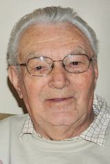 Benny J. Gorchesky, a longtime Johnstown resident, died March 20, 2013, in Sedona, Ariz.
Benny J. Gorchesky, a longtime Johnstown resident, died March 20, 2013, in Sedona, Ariz.
Born March 29, 1923. He was a resident in Arizona since September 2012. Benny is survived by wife, Ethel Gorchesky (Voytko); and his children, Ellyn Chace, Hamilton, Va.; Larry Gorchesky, Cody, Wyo.; and Dr. Mark Gorchesky, Sedona, Ariz. Mr. Gorchesky has five grandchildren and five great-grandchildren.
He was a highly decorated World War II veteran with the U.S. Air Force. A member of the famed 8th Air Force-303rd “Hell’s Angel’s” bomb group stationed in Molesworth, England. Benny flew 35 missions over enemy occupied Europe in a B-17.
He was a retired Bethlehem Steel employee and a member of Johnstown Retired Men’s Club. Benny loved fishing, hunting, travel, picnics with family and Polka music. He was loved by many and will be missed by all that knew him.
No Johnstown memorial service is planned as yet. In lieu of flowers, the family ask that you donate to St. Theresa’s Church, West End, for a memorial Mass to be said in his honor. Wife, Ethel Gorchesky, resides at Sedona Winds-Assisted Living, No. 157, Sedona, Ariz. 86351.
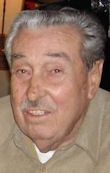 Ervin Hilborn (October 21, 1921 - March 29, 2013) Age 91, went to be with his family Friday, March 29, 2013. Ervin was born October 21, 1921 in Topaz, Michigan the son of Albert and Ada (Houk) Hilborn.
Ervin Hilborn (October 21, 1921 - March 29, 2013) Age 91, went to be with his family Friday, March 29, 2013. Ervin was born October 21, 1921 in Topaz, Michigan the son of Albert and Ada (Houk) Hilborn.
A resident of Lansing most of his life, Ervin retired from Oldsmobile after 30 years of service. Ervin, a veteran of WWII, honorably served in the Army Air Corp’s 303rd Bomber Group. He flew 23 missions and shot down 3 German fighters. Ervin received the Purple Heart, Presidential Unit Citation and the E.A.M.E. Theatre Ribbon with 2 battle stars. He was also proud to be a Life Member of VFW Post #701.
An avid outdoorsman, Ervin enjoyed hunting, fishing and gardening. A loving husband, father, brother, grandfather, great grandfather, uncle and friend will be dearly missed by all that knew him.
Ervin is survived by his loving wife of 66 years, Mary; children, Pamela (Larry) Stevens and Diane (Ken) Lehnert; sister, Dorothy Brzak; grandchildren, Katrina, Kerrie, Brad, Jenny, Kristine and Amy. Also surviving are 13 great grandchildren and numerous nieces and nephews.
Funeral Services will be held Tuesday, April 2, 2013, 1:00 PM at the Palmer, Bush & Jensen Delta Chapel with Pastor Rick Martin officiating.
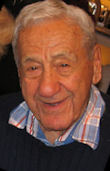 Albert Louis Farrah, Sr. 95, of Gerrish Island, Kittery Pt., ME, joined his beloved wife of 65 years, Jeanne Farrah who passed away in his arms on March 8, 2013.
Albert Louis Farrah, Sr. 95, of Gerrish Island, Kittery Pt., ME, joined his beloved wife of 65 years, Jeanne Farrah who passed away in his arms on March 8, 2013.
A retired WWII Army Air Corp Captain, he became a prisoner of war on Dec. 20, 1943 when his B-17 was shot down on a bombing mission over Bremen, Germany. He was awarded the Purple Heart for injuries sustained on that mission.
Mr. Farrah graduated form Lawrence High School, the Tilton School, New England Institute of Anatomy and attended Syracuse University. In 2008, he was bestowed the title of "Orange" by the university's president for his service during WWII.
After the war he returned to Lawrence and rejoined his father as a funeral director at L. J. Farrah & Son Funeral Home in Lawrence, where he remained active until his death.
Mr. Farrah was a lifelong parishioner of St. Anthony Maronite Catholic Church in Lawrence and is survived by his children, Albert L Farrah, Jr. and his wife Karen and their 2 daughters of Winchester; David W. Farrah and his 2 daughters of Methuen; Jeanne, wife of George Jabour and their 3 children of Chestnut Hill, MA; Louis J. Farrah, II and his wife Ivanna and their 4 children of Andover; Melissa, wife of James Bouzianis and their 3 children of N. Hampton, NH; Maria, wife of Raymond Howell of Newton, MA and Clifford H. Farrah and his wife Kim and their 2 children of Destin, FL.
A funeral mass will be offered Tuesday, April 2, 2013 at 10:00 am St. Anthony Maronite Catholic Church 145 Amesbury St; Lawrence, MA. Burial will be at St. Anthony Cemetery, Methuen, MA
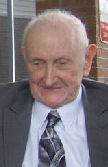 Harry L. Patterson, 94, of Lake Mary, Florida went home to be with our LORD on Thursday February 7, 2013. His eternal destination was set on March 20, 1984 when he accepted Jesus as his LORD and Savior. On April 10, 2007 Harry made his public profession of faith being baptized at First Baptist Church, Orlando, FL. He is now in the presence of his LORD, Anne and a host of family and friends who are celebrating his arrival.
Harry L. Patterson, 94, of Lake Mary, Florida went home to be with our LORD on Thursday February 7, 2013. His eternal destination was set on March 20, 1984 when he accepted Jesus as his LORD and Savior. On April 10, 2007 Harry made his public profession of faith being baptized at First Baptist Church, Orlando, FL. He is now in the presence of his LORD, Anne and a host of family and friends who are celebrating his arrival.
He was born June 13, 1918 in Avella (Independence Township), Pennsylvania, to parents William Boyd and Bessie Snediker Patterson.
Harry married and was devoted to Anne Burroughs Patterson for thirty years. Just prior to Anne's passing, Harry took early retirement to care for his wife. They lived in Orlando since 1962.
Harry was transferred to Orlando by his employer Eastern Airlines where he worked for 30 years first as a flight attendant and finishing his career in ground operations.
A decorated World War II combat veteran, S/SGT Harry Patterson served as a waist gunner in the 303rd Bombardment Group of the 360th Bombardment Squadron – Heavy. Stationed in Molesworth England, he participated in 32 flying missions in the Normandy, Northern France and Rhineland battle campaigns. He received the following decorations and citations: Distinguished Flying Cross Air Medal with 3 Oak Leaf Clusters, Good Conduct Medal, Presidential Unit Citation and European African Middle Eastern Service Medal with 3 bronze stars.
Harry was predeceased by his wife and parents, five brothers, David, Lewis, Lloyd, Lyle and Dwayne who died in infancy; seven sisters, Ethel, Mildred, Hazel, Alice, Elnore, Ione and Bessie (Betty). He is survived by many nieces and nephews.
Funeral arrangements were coordinated by Baldwin Fairchild with a private service at Chapel Hill Cemetery in Orlando, Florida.
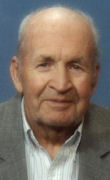 Wayne Humphries, age 88, of Shelley, Idaho passed away at Mount Vernon Assisted Living in Idaho Falls, Idaho on March 6, 2012. He was under the care of Aspen Home Health and Hospice
Wayne Humphries, age 88, of Shelley, Idaho passed away at Mount Vernon Assisted Living in Idaho Falls, Idaho on March 6, 2012. He was under the care of Aspen Home Health and Hospice
He was born September 18, 1923 at Rose, Idaho (near Blackfoot) to Harold Humphries and Ora May Chaffin Humphries. When he was a few months old the family moved to the Woodville area (west of Shelley) where Wayne grew up and attended the Taysom School and Shelley High School.
Wayne received machinist training at a vocational school in Weiser, Idaho, then worked for Boeing Aircraft in Seattle, Washington building B-17 bombers until he entered the Army Air Corps on January 19, 1943.
He served in World War II as a tail gunner in B-17 Flying Fortresses in the 8th Air Force, then was transferred to the 9th Air Force where he flew in the A-20 Marauders. He received an honorable discharge on June 16, 1945.
After returning home to Shelley, Idaho after the war, he met and married Twila Leona Russell in the Idaho Falls, Idaho LDS Temple on February 20, 1946. They farmed west of Shelley and had four children. They were later divorced.
Wayne farmed and worked in the maintenance departments of several potato-processing plants in the area, including Western Farmers, Idaho Potato Growers, Simplot, and Idaho Supreme. He continued to work part-time at Idaho Supreme in Firth, Idaho until he was 84 years old.
He was an active member of the LDS church and a member of the David B. Bleak Post 93 American Legion in Shelley.
Wayne is survived by his four children: Stacia Herndon and Shawna (Kent) England of Shelley; Shayla (Mike) Hawkes of Moreland; and Gaylen Humphries of Idaho Falls; and 10 grandchildren and 11 great grandchildren. Also surviving are his brothers, Eugene (Colleen) Humphries of Shelley and Eldon (Lois) Humphries of Ogden, Utah and a sister, Joan (Ted) Hodapp of Manti, Utah.
He was preceded in death by his parents; sister, Leora (Rayo) Humpherys, and brother, Wendell (Nina) Humphries.
At Wayne's request, no funeral service will be held. His children will visit with family and friends at Nalder Funeral Home, 110 West Oak in Shelley, from 6:30 p.m. until 8:30 p.m. on Thursday evening, March 8, 2012. Private interment will be next to his parents and brother at Fielding Memorial Park in Idaho Falls. The Shelley American Legion Post 93 will perform military rites.
![]()
Wow, what a great issue of "The Molesworth Pilot". I get every issue and read it top to bottom. This one, however is very special. As I was reading through the latest news I scrolled down and saw the piece about "Remembering the Unsung Heros Like Walter Dooley" I looked at the photo of the crew and there in vivid black and white was my dad, Homer W. Perkins. I knew he was in the Hells Angels but when I looked at FDR's Potato Peelers and saw him in the front row I almost lost my breath.My dad has passed on now. Unfortunately, I did not get to know him all that well. He and my mom went their separate ways when I was about 3 years old. We got together later in life and he had all kinds of great stories about his buddies in the Army Air Corp. He was proud of his service and he was proud to have served with all the heroes he had the privilege to serve with. I was hoping there may be some of you out there who might have known him and perhaps could share a memory or two about him with me. I know he was a little on the wild side so don't worry about shocking me. My mom is 92 years old and still talks about him and has pictures of him everywhere.
Anything anybody can share will be greatly appreciated. All of you guys are still heroes and please accept my thanks for all your service. I am a Vietnam veteran so I have a small taste of what you went through, though I will never understand fully.
Thanks to you all!!!
Rob Perkins
Gary:
Thank you for Ray Miller's Obit in this issue. I have communicated with Ray's granddaughter Brianna and provided her with pictures and other material the family probably had never seen. Maintain the legacy.
Reading the Pilot is a must when it arrives. The stories and experiences become more personal with each none I read. How did so many of us make it when so many more did not? Thank goodness a number of our comrades put their experiences on paper.
Thanks for keeping the 303rd alive. Regards to all.
Al Dussliere
I wish to tell you how much I look forward to receiving "The Molesworth Pilot " via Email
As a Member of "Aeroventure the South Yorkshire Aircraft Museum." I was given a Photo of I think a B17 named "Yorkshire Rose" I have tried looking in Books for information etc and on the Internet without gain.
I wondered if any Member of Molesworth Pilot could help with any information they have regarding this Aircraft and Crew, the Museum would like to open a log of information from the "Molesworth Group" and the US Airforce.
Vic Lowe of "Aeroventure"
Keeping the Legacy Alive,

|